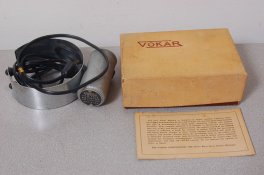hoffy
Member
OK, we have a thread about intermittent agitation (a very good thread indeed)....how about one about constant agitation!
From what I have seen, constant agitation is generally achieved by some form of rotational device. How important is:
My Jobo is a bit of frankenprocessor, which at times means the rotation is not always the same as the previous run. It also sometimes doesn't change directions. Is there going to be a measurable difference in results? (I have only used the jobo twice before for processing film).
Cheers
From what I have seen, constant agitation is generally achieved by some form of rotational device. How important is:
- constant speed of the rotation?
- reversing the direction from time to time?
My Jobo is a bit of frankenprocessor, which at times means the rotation is not always the same as the previous run. It also sometimes doesn't change directions. Is there going to be a measurable difference in results? (I have only used the jobo twice before for processing film).
Cheers












